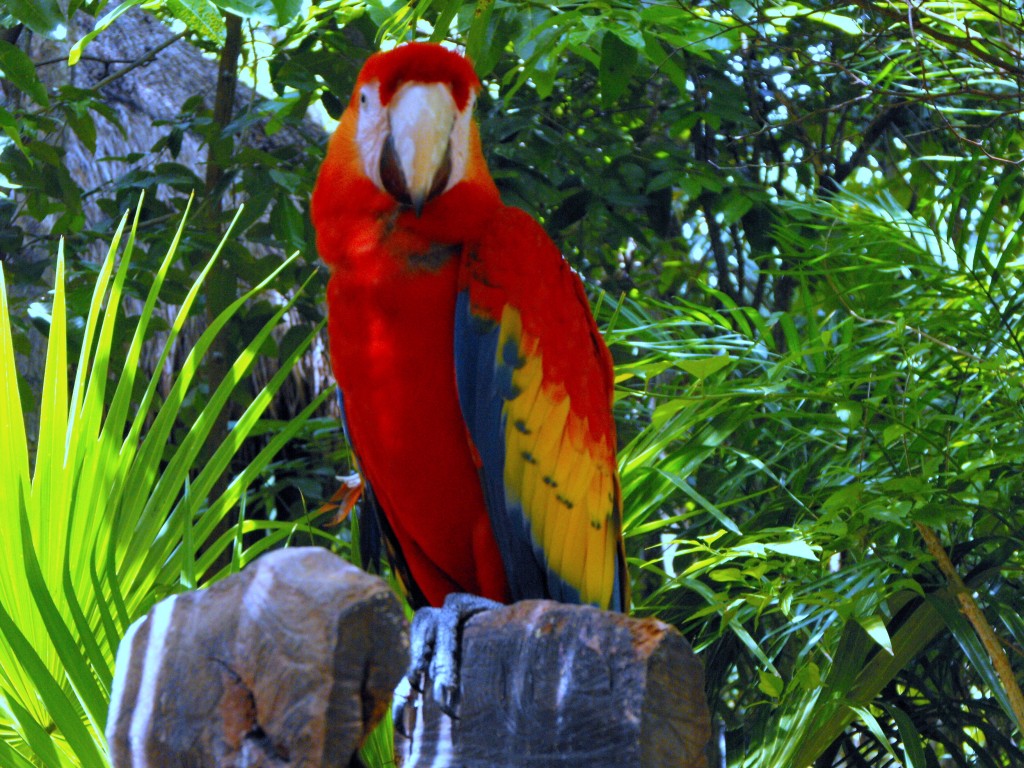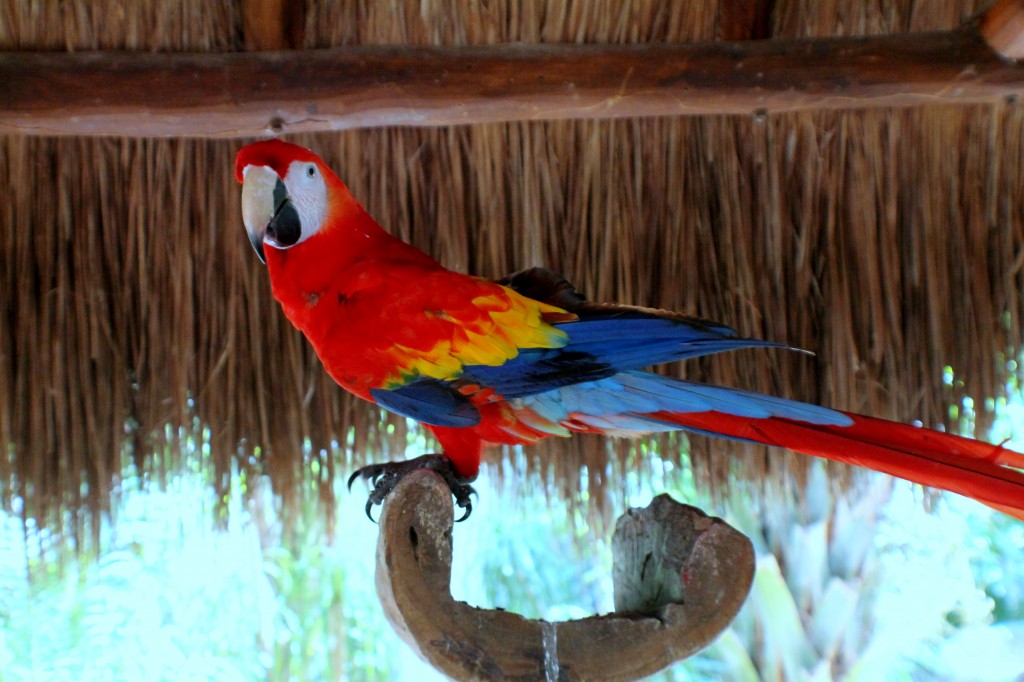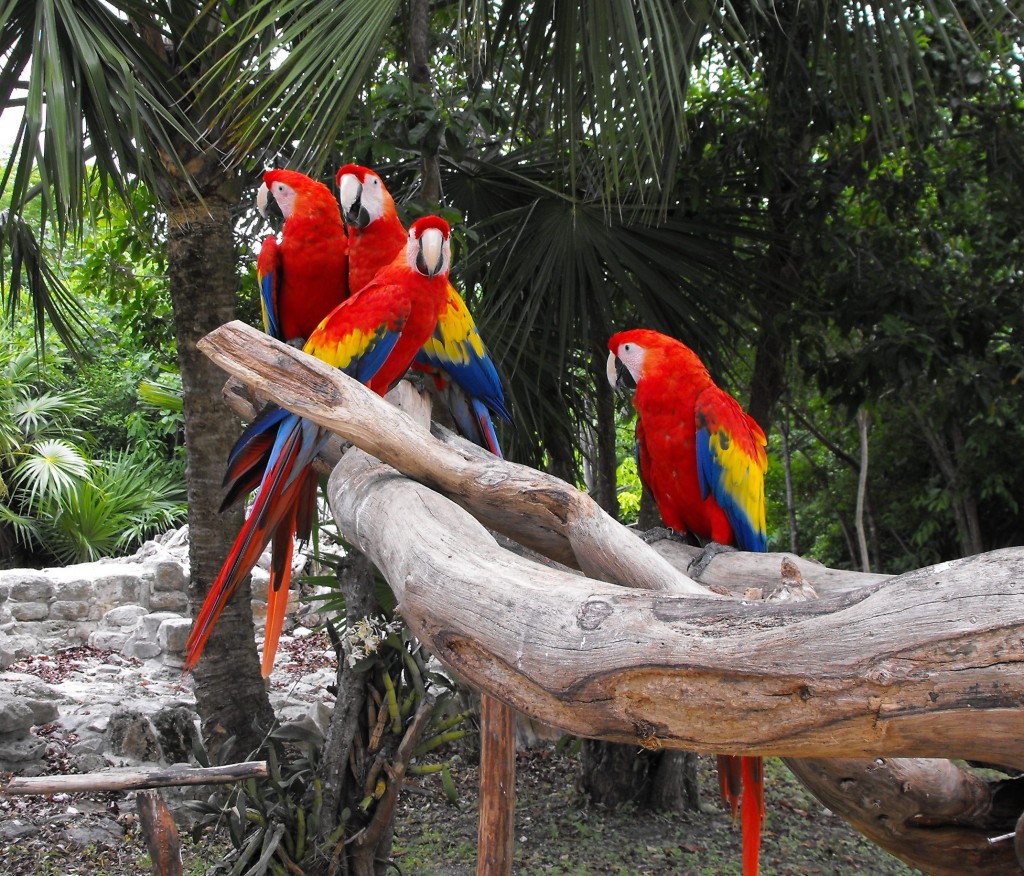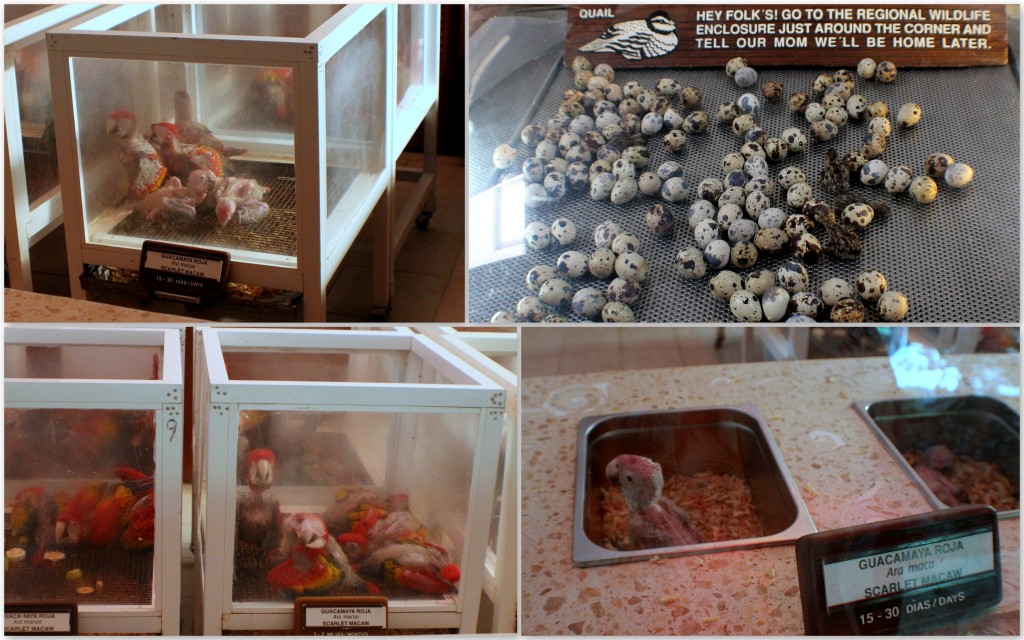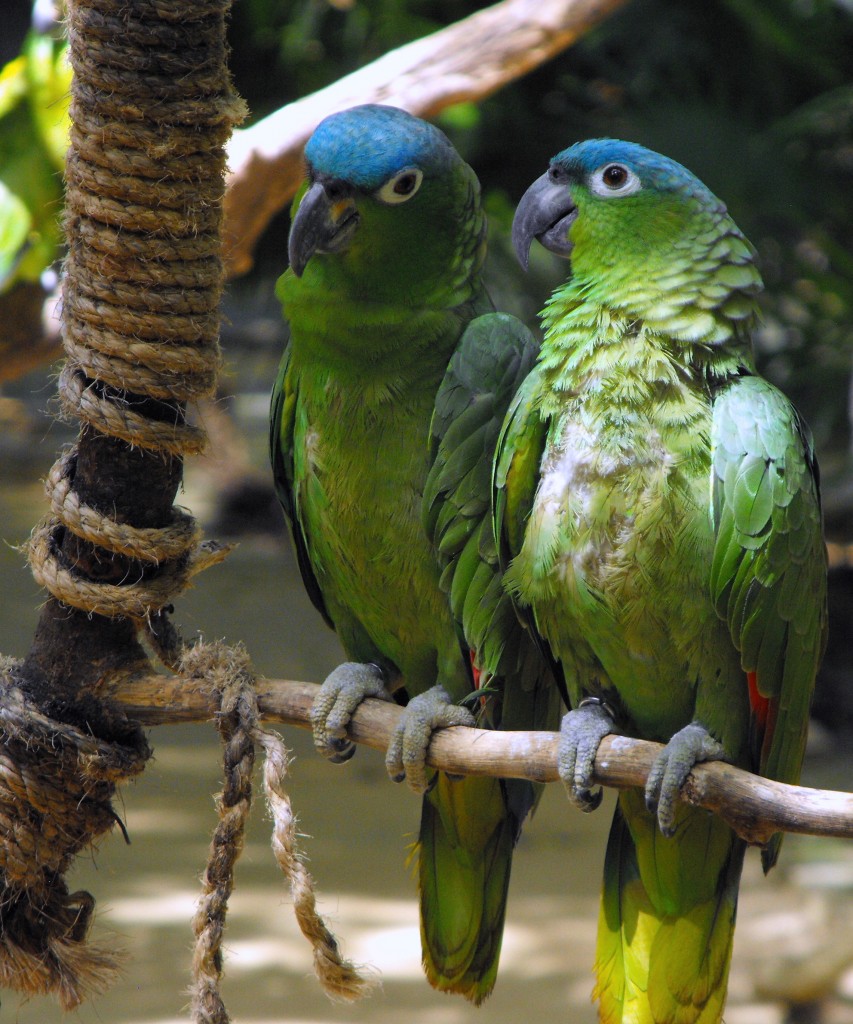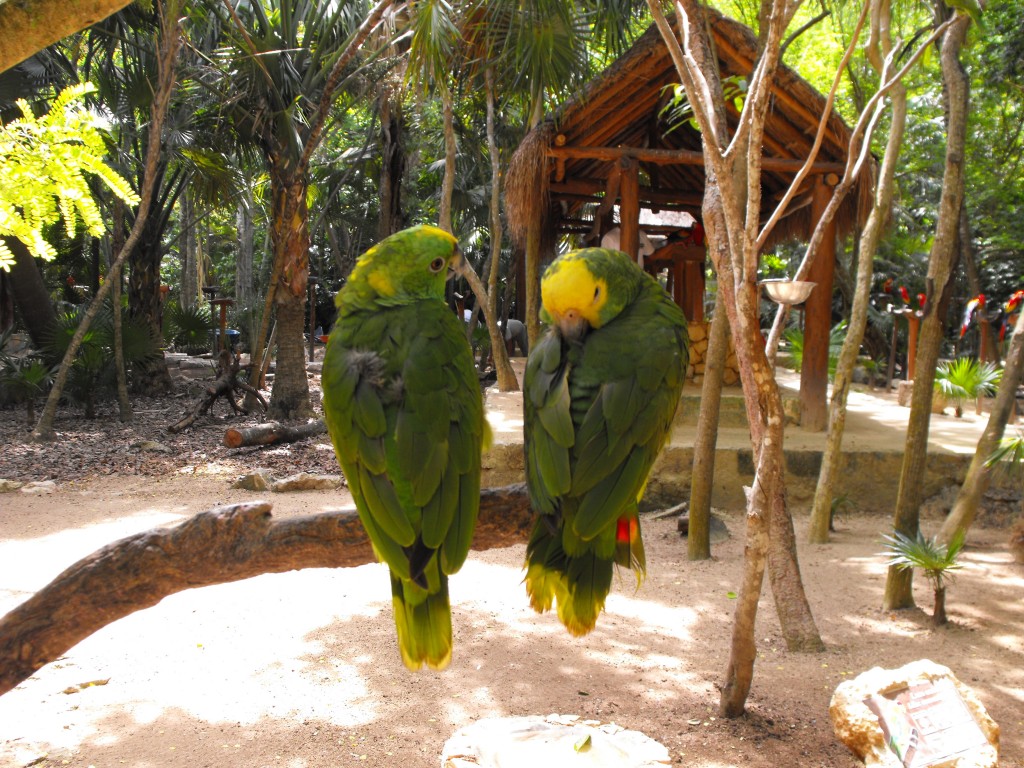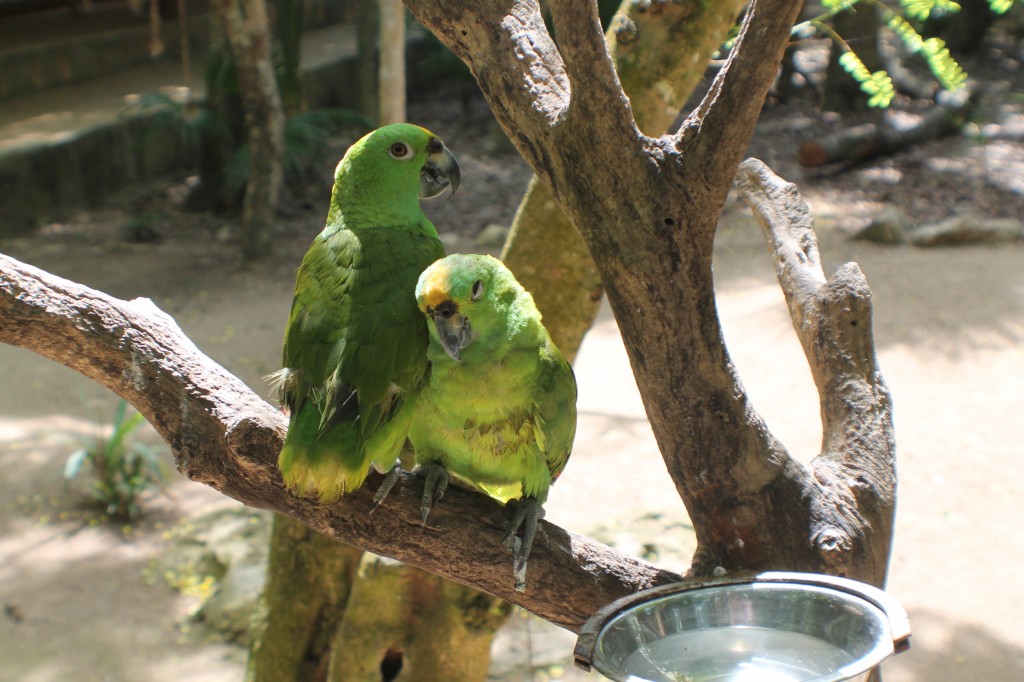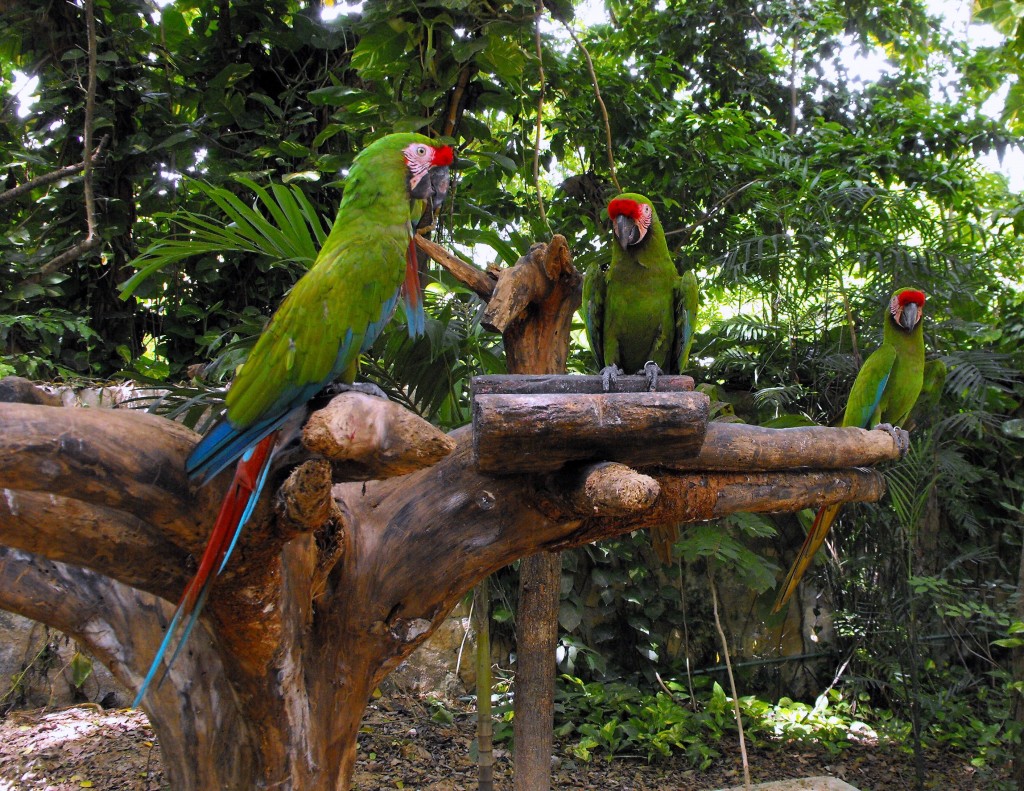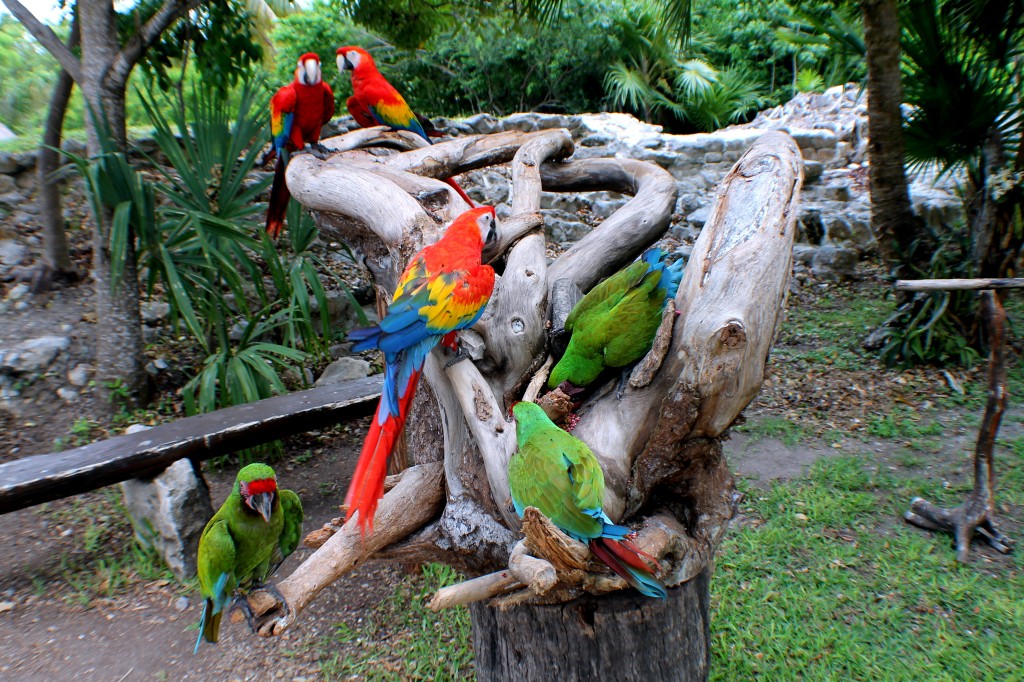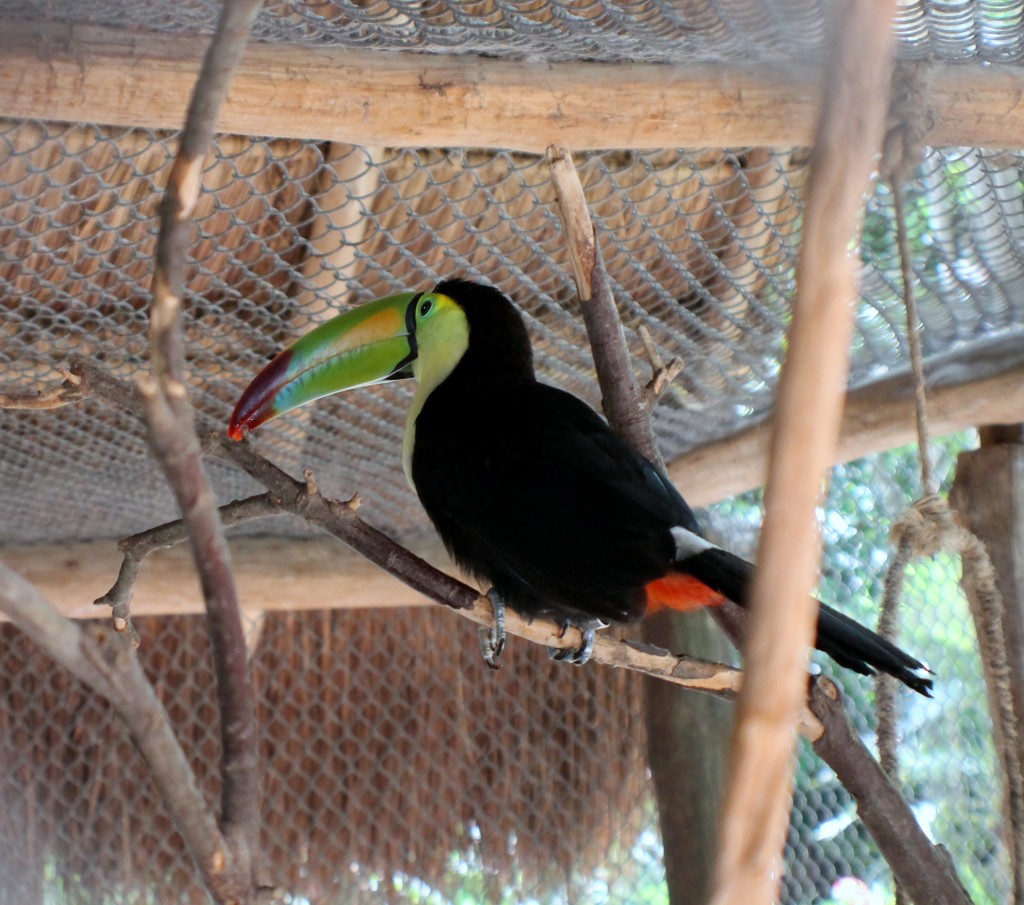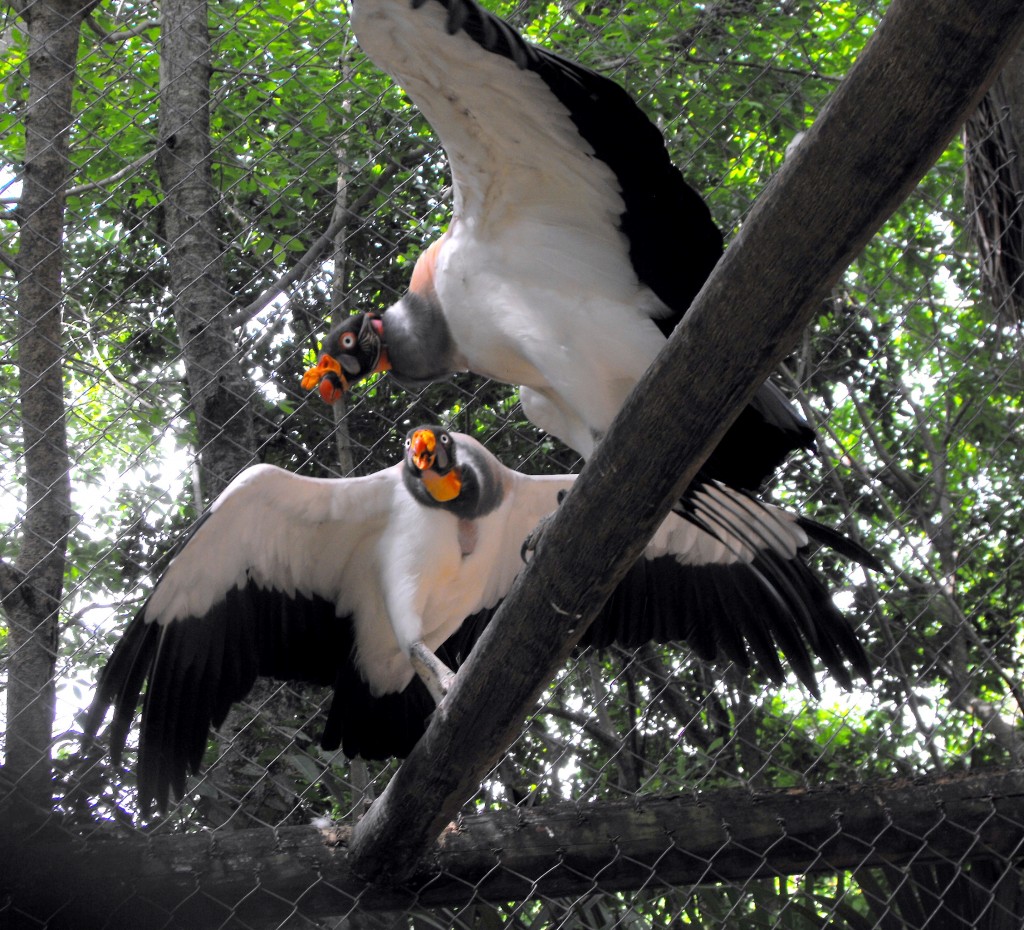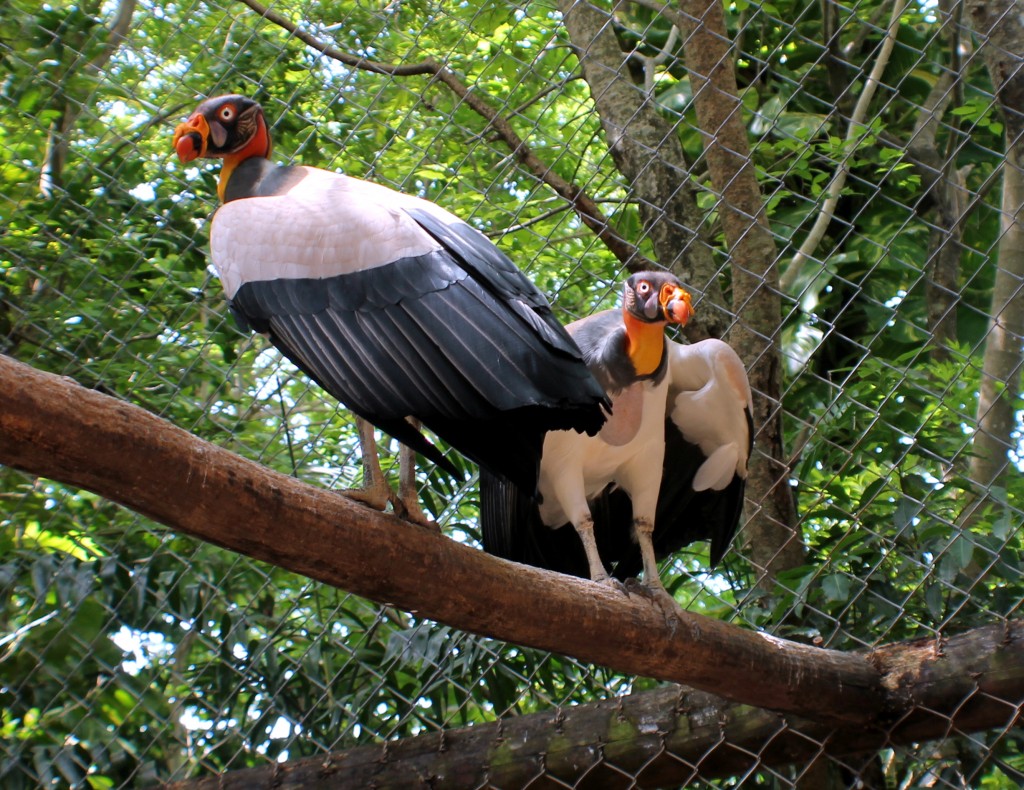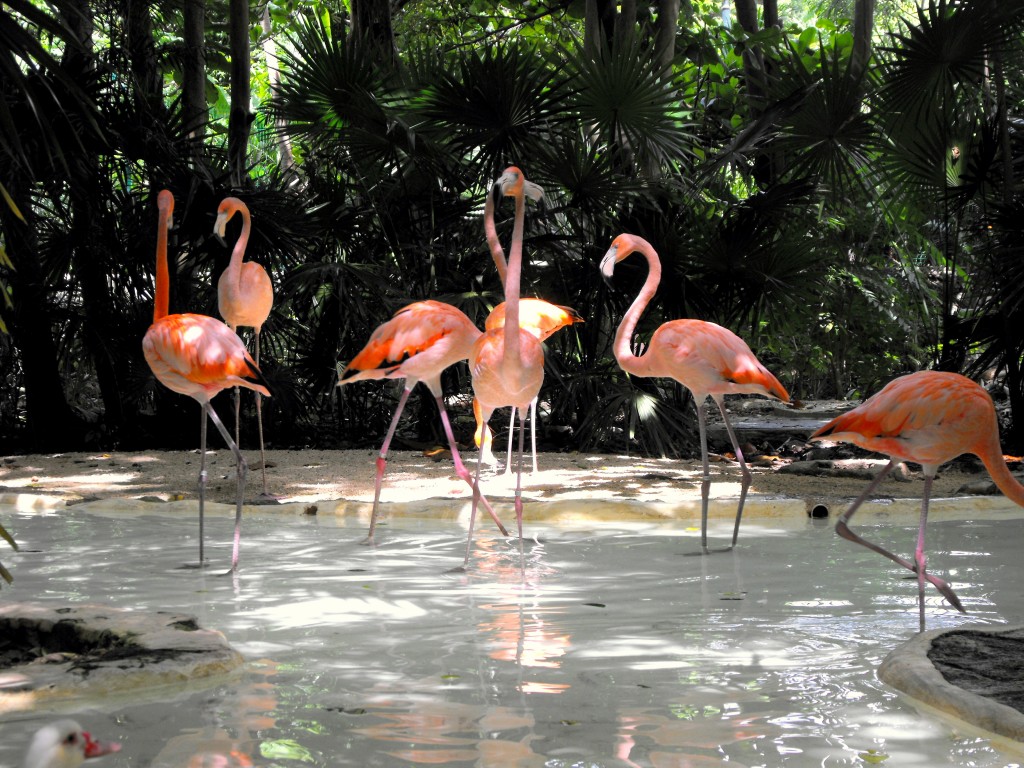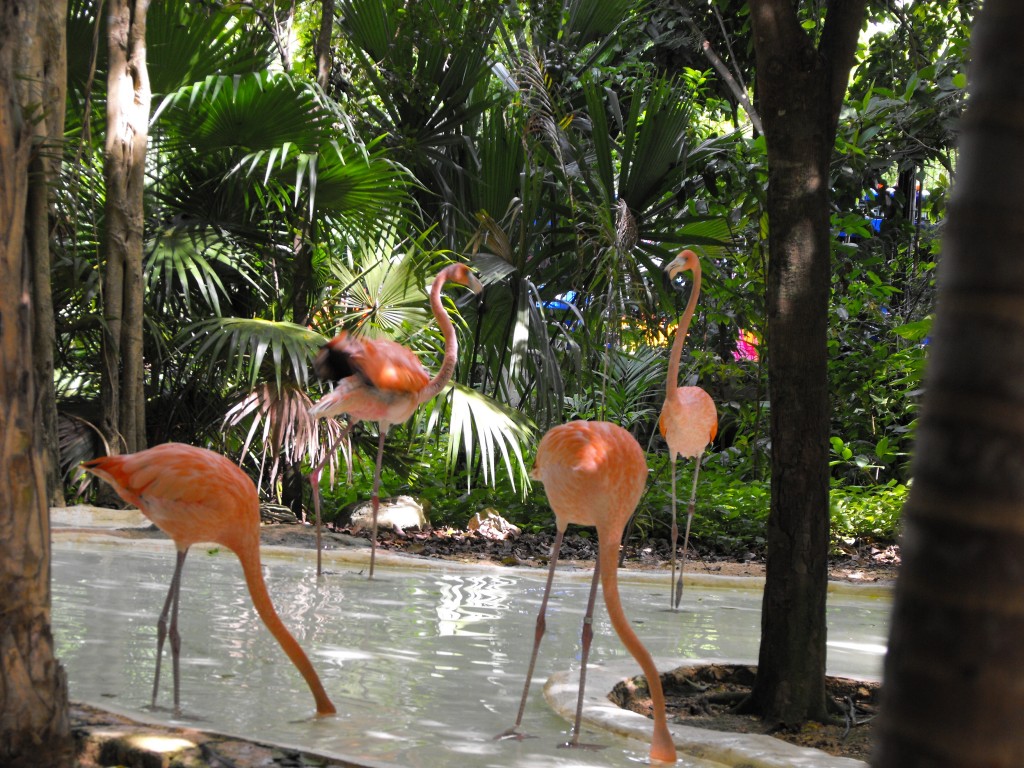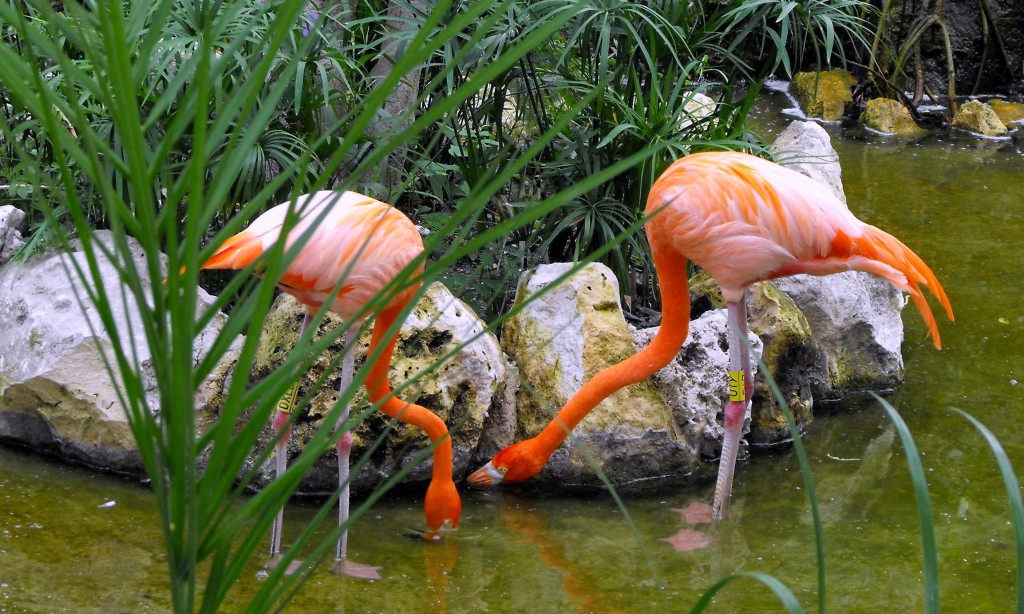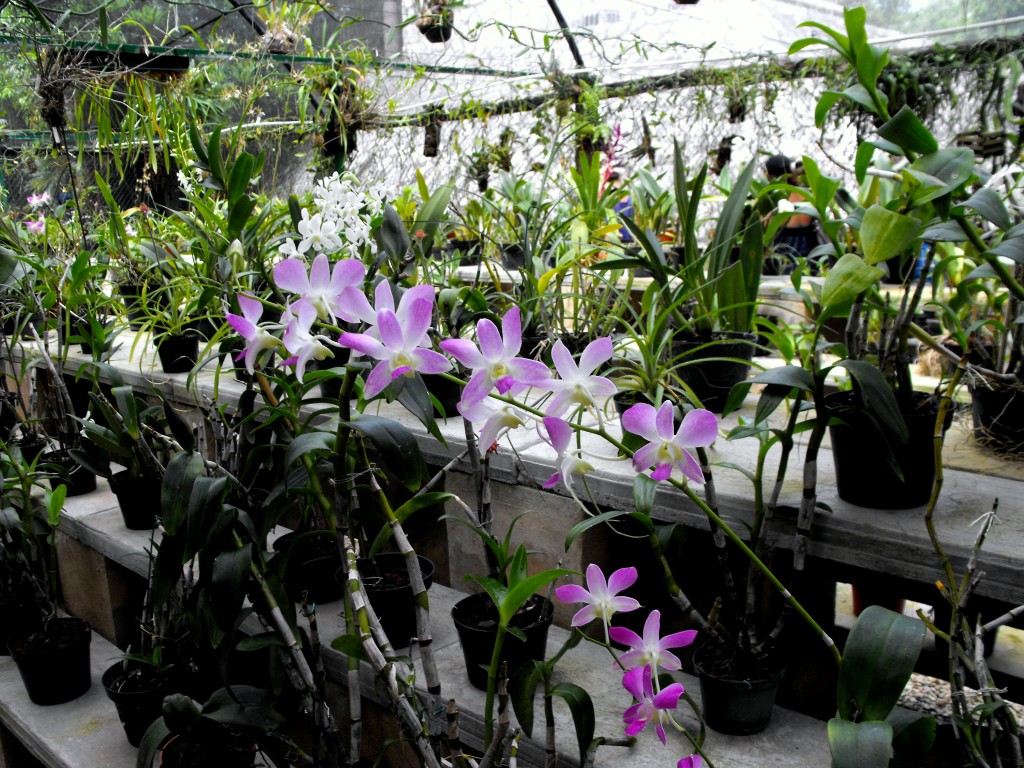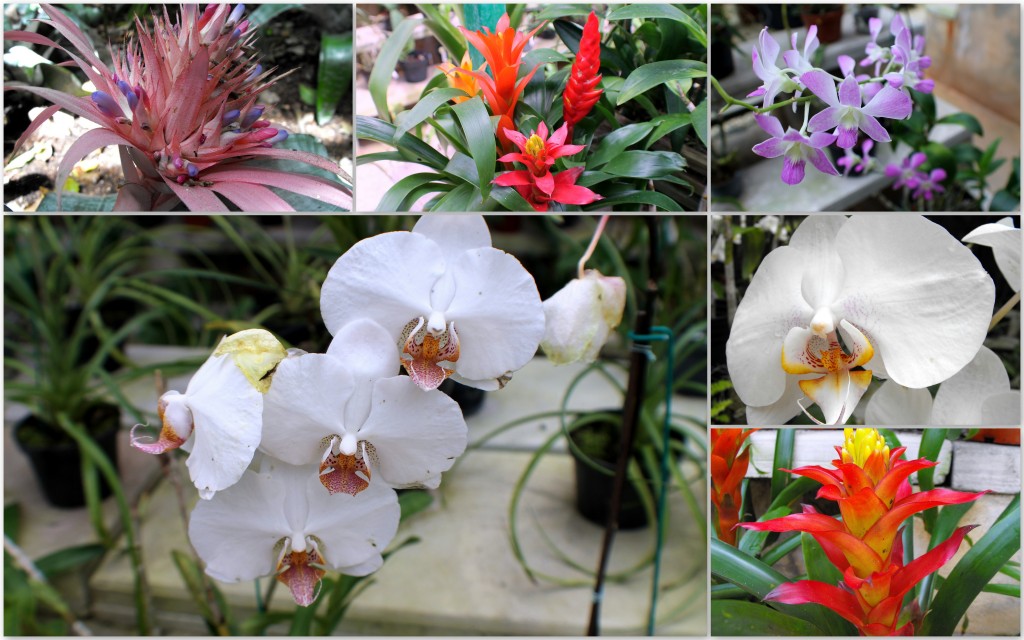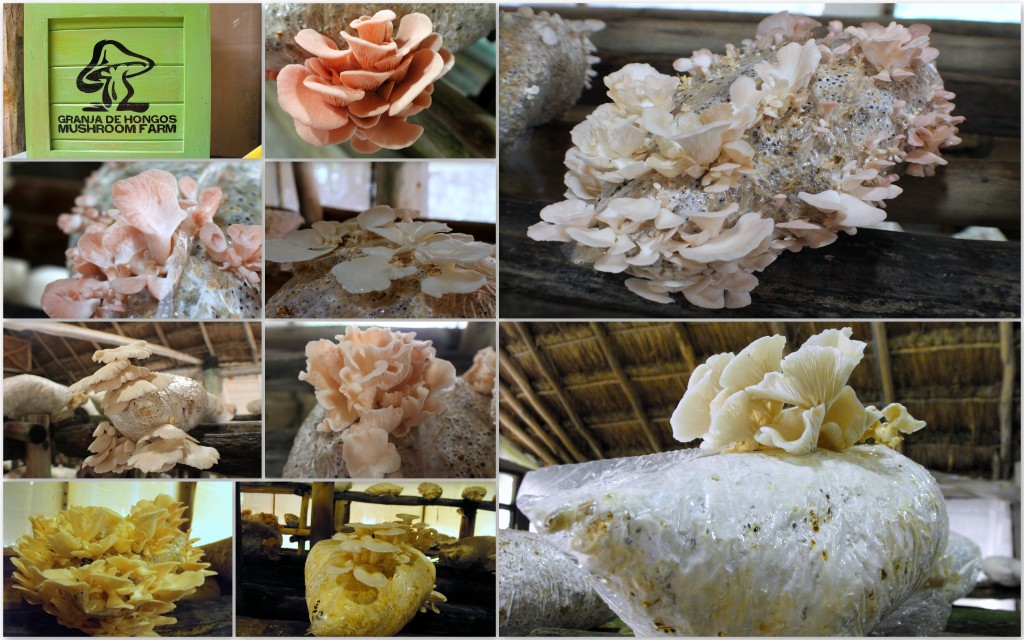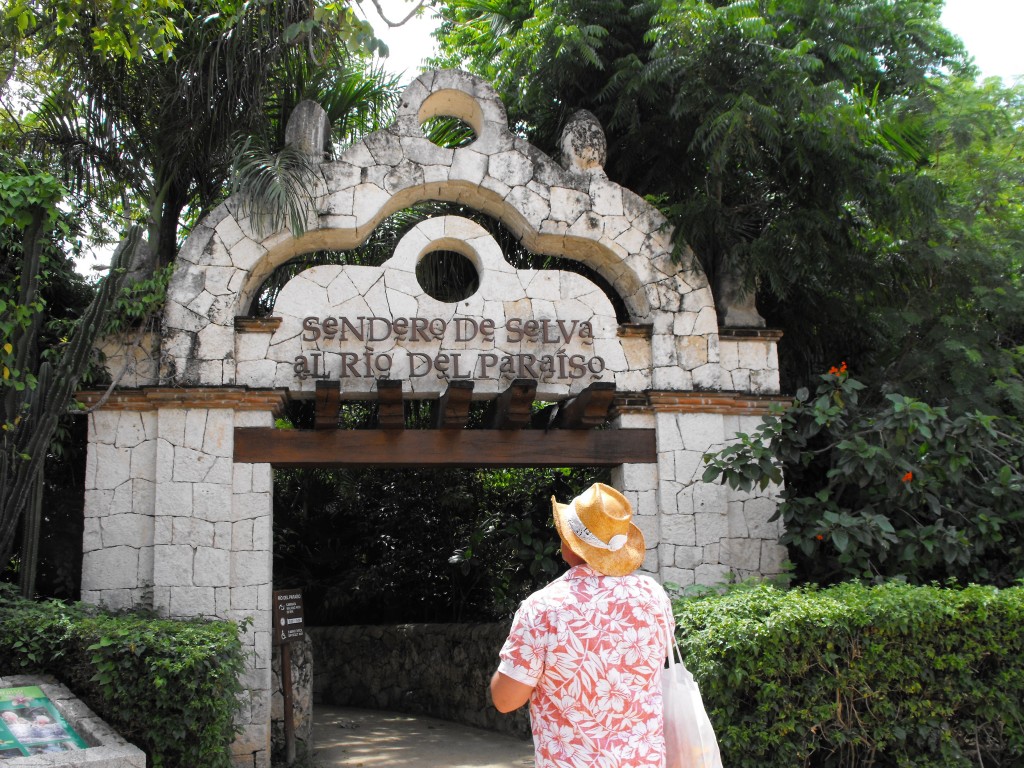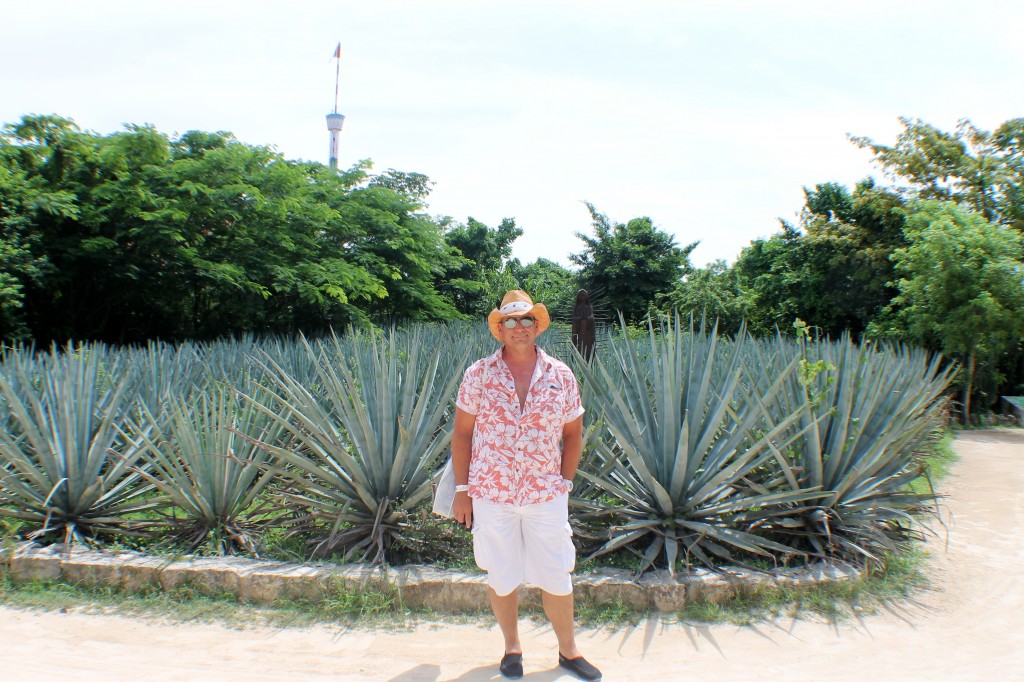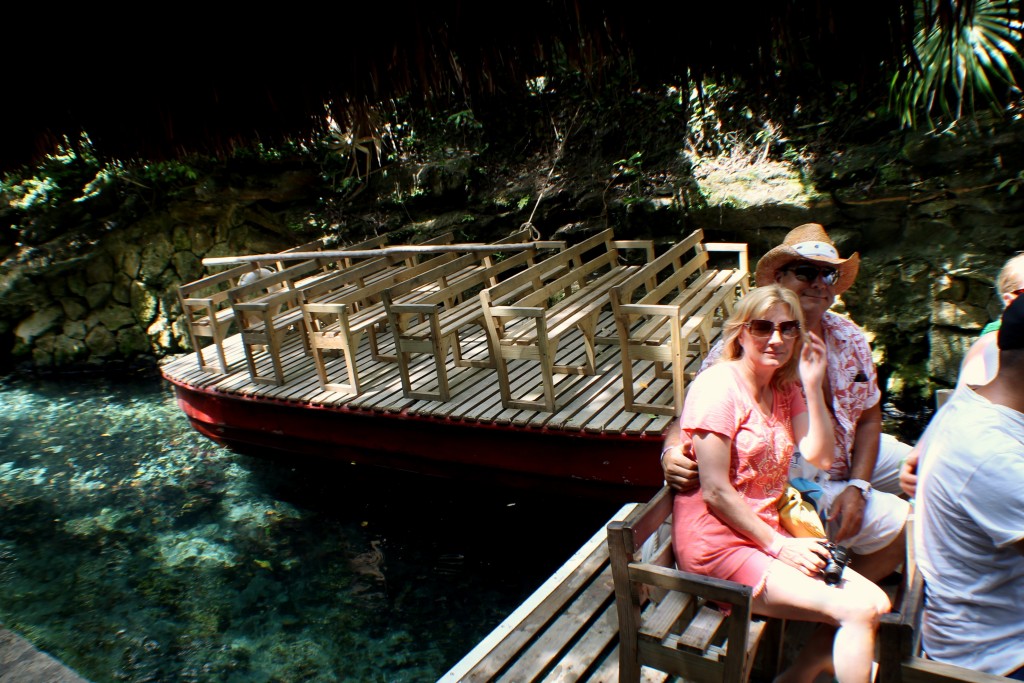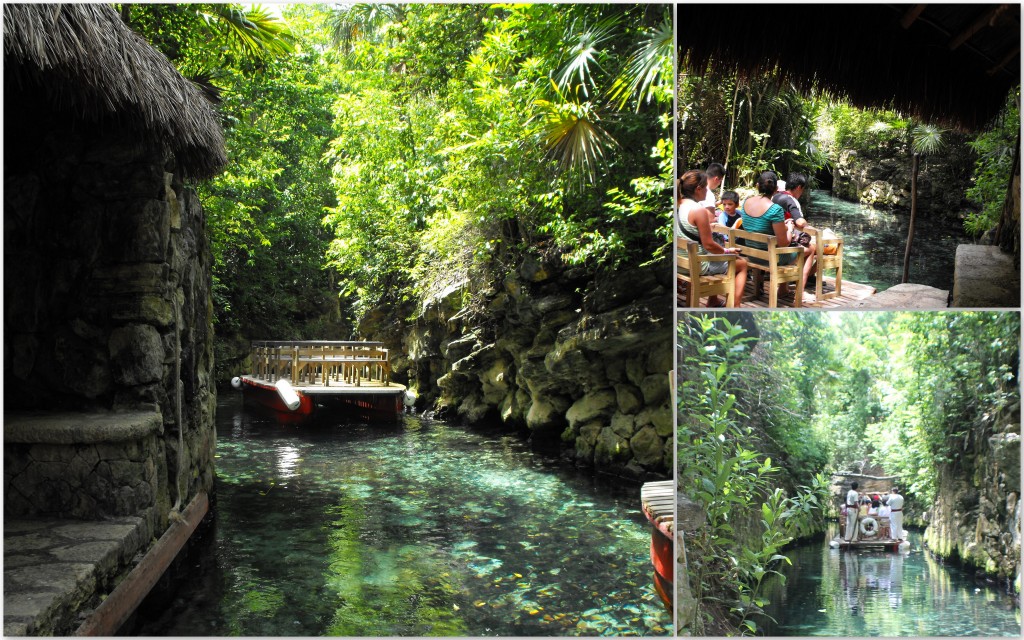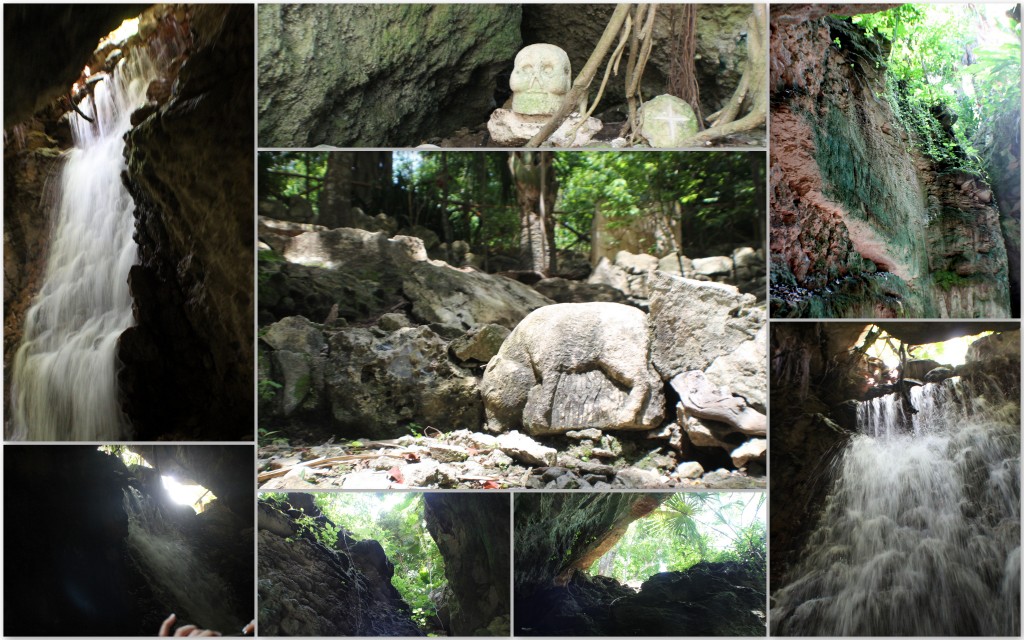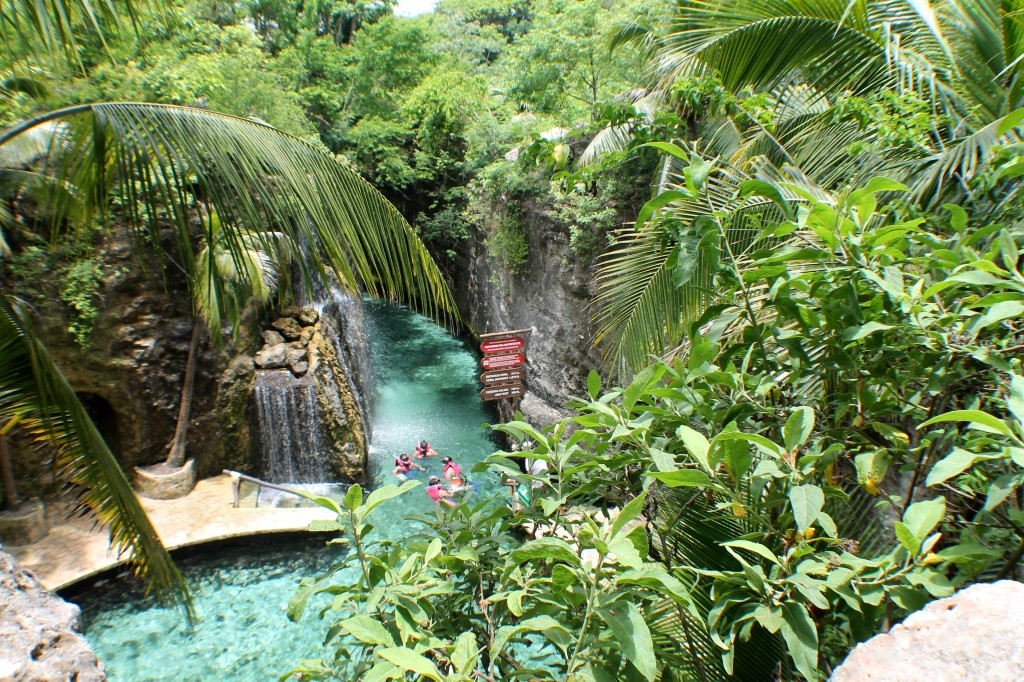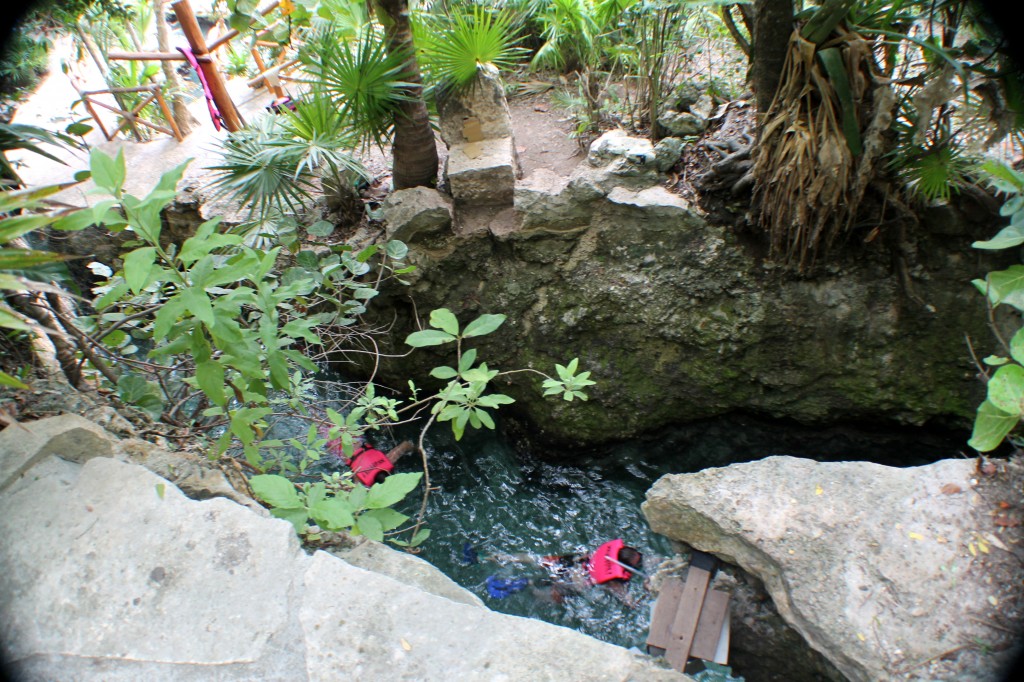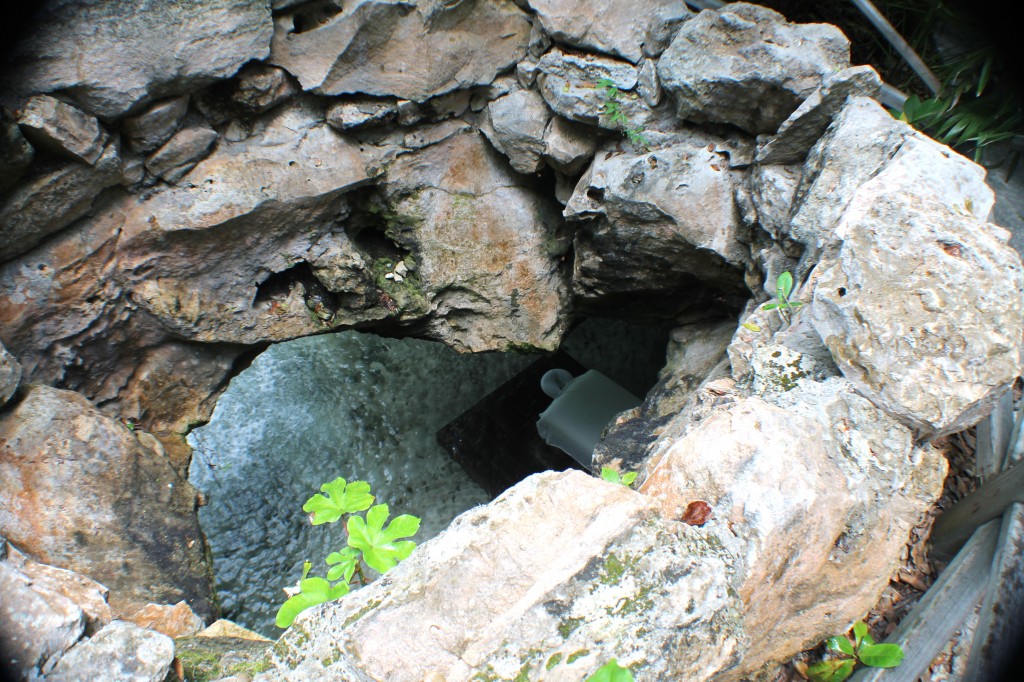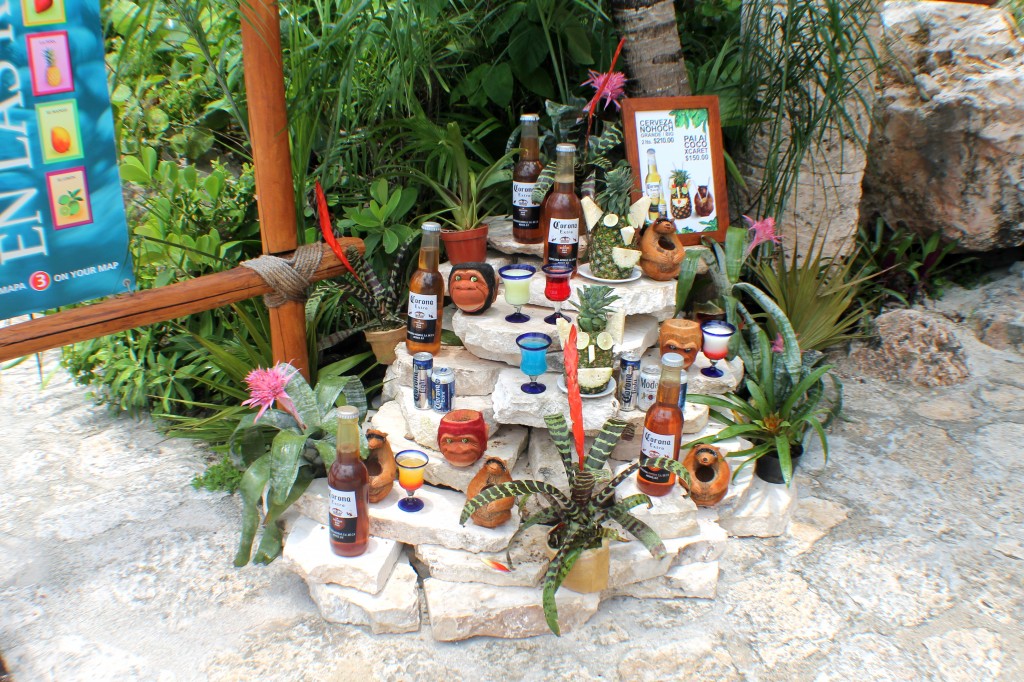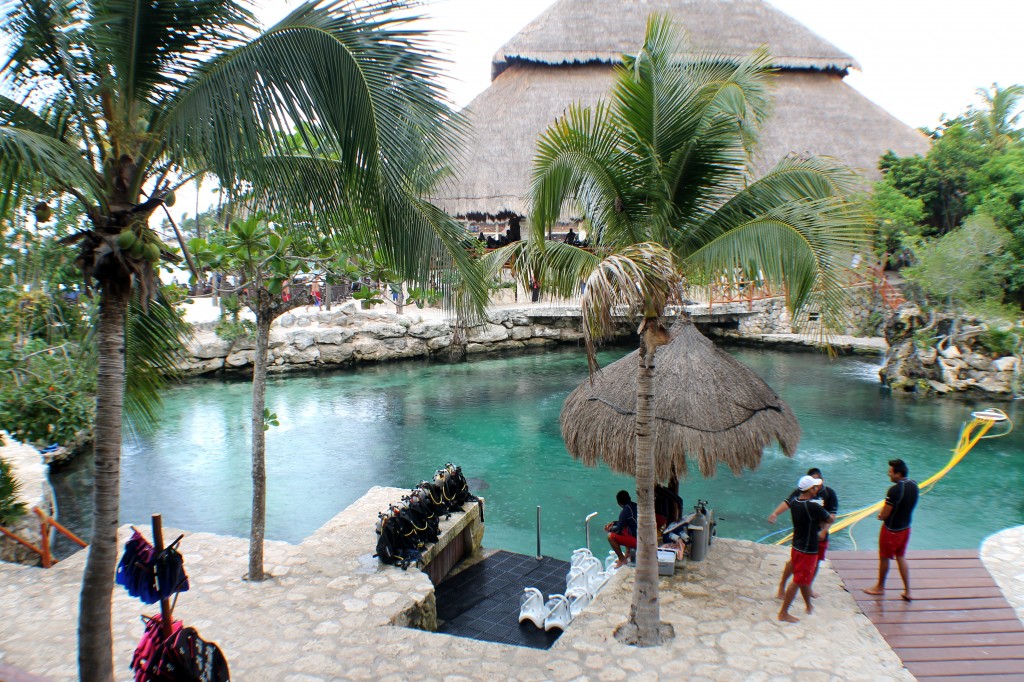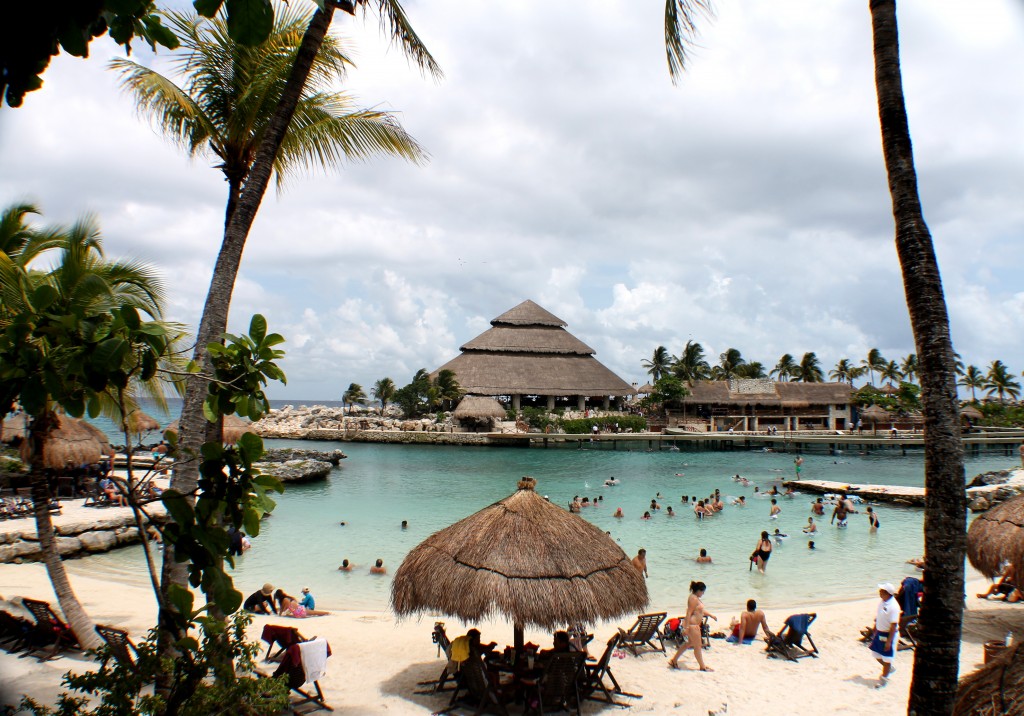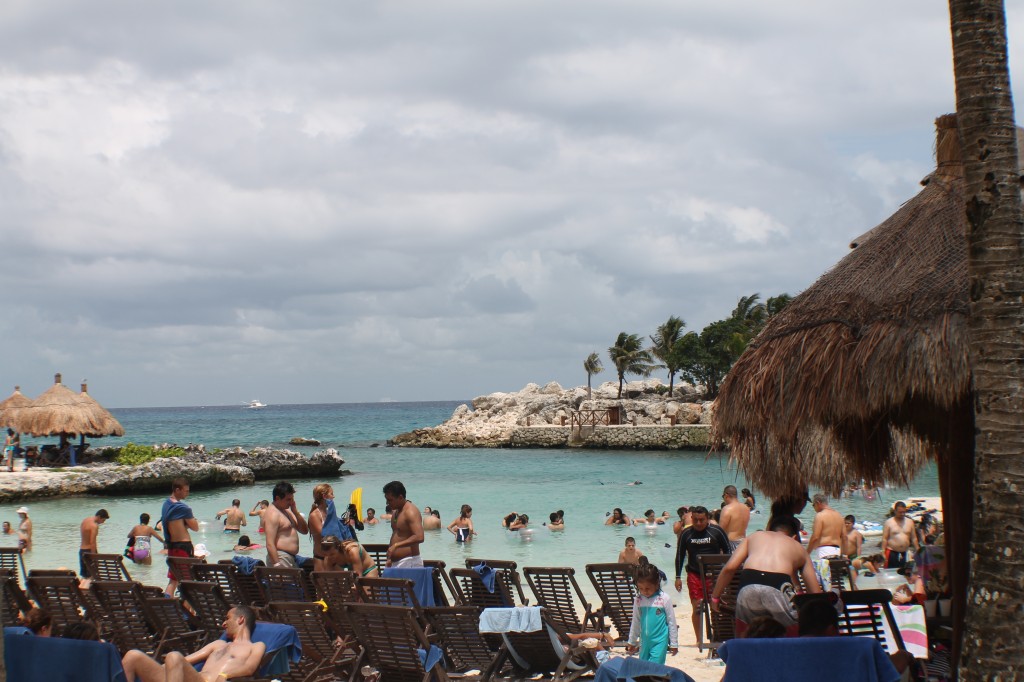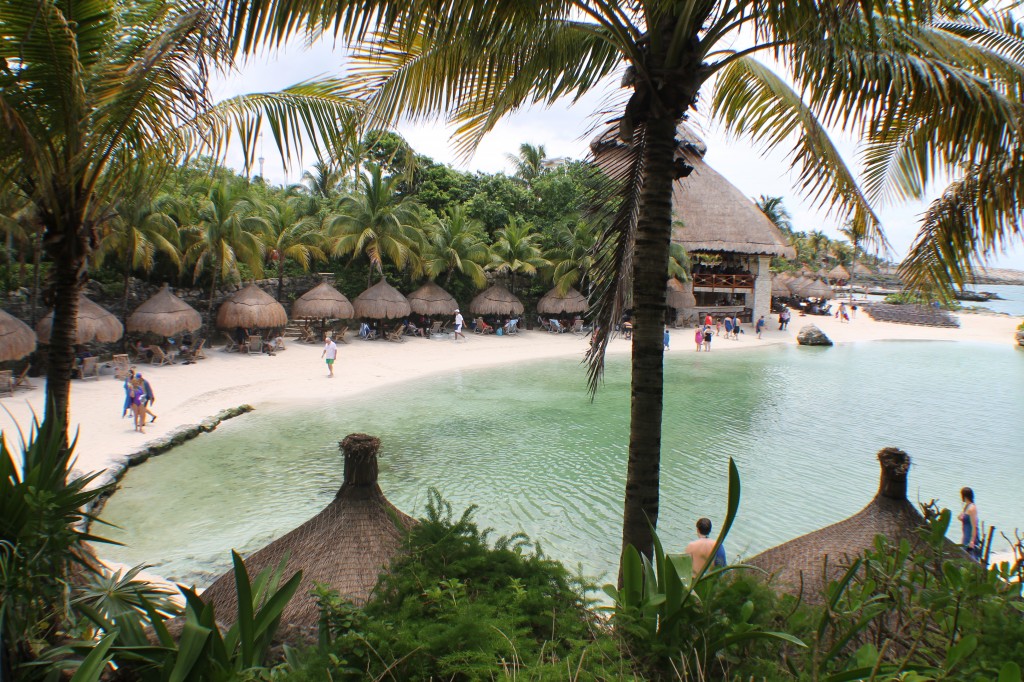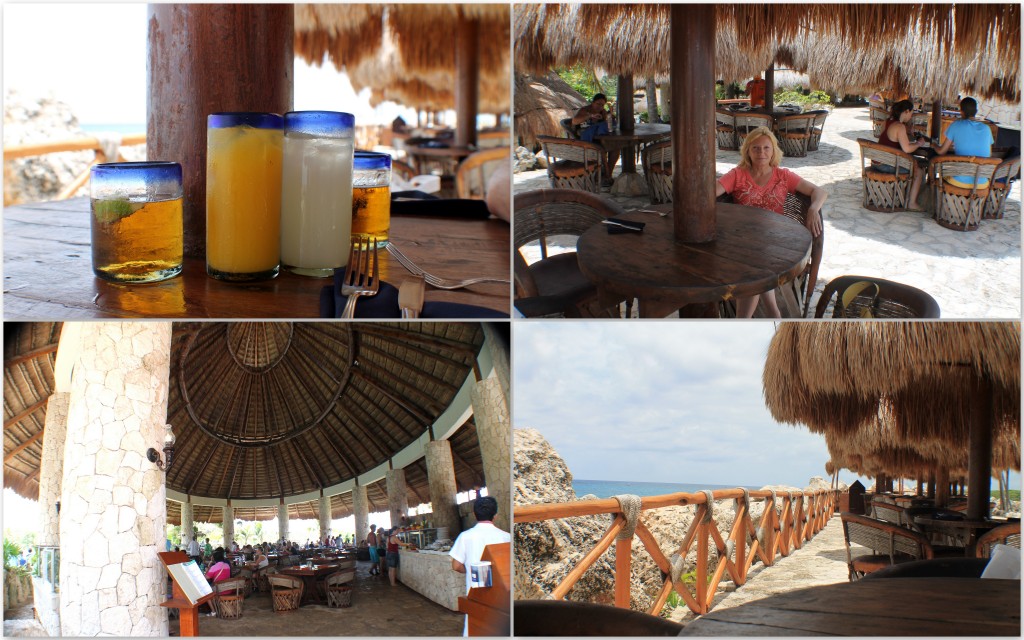Aviary is my favorite place at Xcaret. Aviary is a natural habitat for some 60 species of tropical birds who populate the jungles of the Yucatan peninsula. Here the visitors can see some of the most spectacularly colored birds of the jungle living within an open-air sanctuary. Parrots and macaws mate for life and at Xcaret they have plenty of company. The birds are not just there to amuse visitors, there is an active breeding program and birds are reintroduced into the wild. This scarlet macaw is one of dozens in the park.
The scarlet macaw, a species considered endangered, is indigenous to southern Mexico. Due to the destruction of its natural habitat and illegal trade, the bird is now only found in two well-preserved areas in the jungles of Chiapas and Oaxaca area in Mexico.
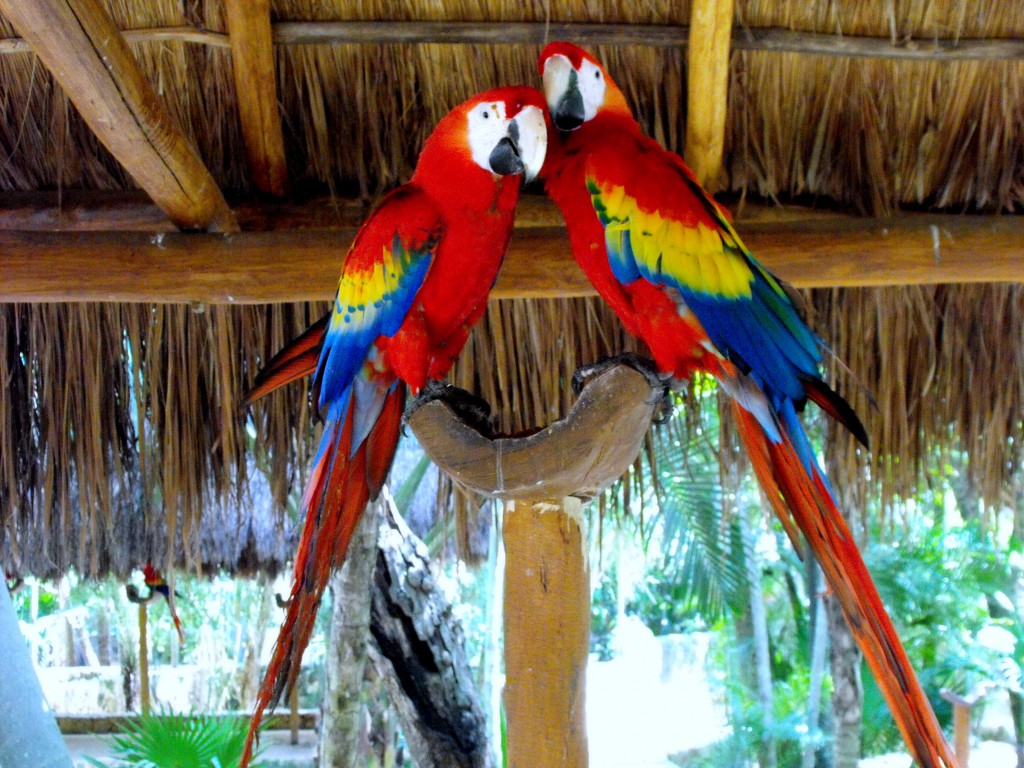
Today there are more than 1,000 specimens of scarlet macaws at Xcaret as a result of the Park´s successful reproduction program. The park won a Guinness Record for the largest number of macaws’ births in the same installation.
These are the incubators for parrots and quail at Xcaret. We were able to have a peek at the baby macaws in different stages of their development. These scarlet macaws range from only a few days to 3 months old, as well as some baby quails.
We were able to see a wide variety of bird species, including lots of scarlet and green macaws, toucans, and flamingos, as well as some other animals, like deer and crocodiles. Here are blue-headed green macaws.
And yellow-headed green macaws.
We saw a toucan with a colorful beak. Such a pretty bird!
The King Vulture. What powerful birds!
Flamingos at Xcaret are one of the most visited specimens of the park. These stunningly beautiful pink birds inhabit shallow rivers and lagoons, but mainly mangrove areas. They are yet another magnificent bird species that has found refuge at Xcaret Park.
Flamingos are curious creatures that have a beak in the shape of a spoon which acts like a strainer to filter food from the water. They can be observed at the exit of Xcaret’s underground river, the beach and breeding area.
The Orchid Greenhouse has an amazing variety of orchids with 89 species endemic to the region and a variety of bromeliads and other beautiful flowering species. The greenhouse is right next to the mushroom farm. A “nature walk” with plaques identifying a wide variety of plant species leads from the nursery area through the jungle, and back to the main park exhibits.
The Mushroom Farm is an interesting place to observe all kinds of mushrooms growing right there.
Paradise River Ride is quite a relaxing ride among the beautiful waterfalls and grottos. It lasted only 20 minutes and was really slow, so we could observe the flora and fauna on either side. There are agave plants growing right at the entrance to the Paradise River. We spotted a statue of Our Lady of Guadalupe, also known as the Virgin of Guadalupe in the middle of an agave field. I like agave plants, and not only because they are the main ingredient for tequila products. 🙂
A Paradise River tour involves floating down the river on a raft (without getting wet), through the jungle with its macaws and iguanas, and by the deer and monkey sanctuaries. The shallow, calm, natural snorkeling inlet is filled with tropical fish, with loungers and hammocks provided around it.
We could see some local wildlife along the river during our ride.
Underground River Float is the standout activity at Xcaret. It is a 1,590-foot swim in an underground river. Dave and I skipped this activity, since we were planning on scuba diving the next day and swimming in XPLOR’s stalactite river after that. “Underground”, by the way, doesn’t mean pitch-black and scary. Some areas are like tunnels, but some areas are open like in the pictures below. Besides, there are many pretty places where swimmers can climb out of the water and take a break.
Here is a part of Xpa, or a spa at Xcaret. the bed in the clear blue water looks pretty cool to me. 🙂
We bumped into an interesting display in the park:
Other watery activities at Xcaret include swimming at the beach and snorkeling in the warm lagoon, and premium (i.e. extra charge) activities such as dolphin encounters, snuba, sea trekking, and excursions to the coral reef. We walked by the beautiful cenote with snuba and sea treck equipment. The Sea Trek is an underwater walk around 16 feet down wearing a helmet that fully covers your head and provides oxygen, allowing you to breathe normally while walking among tropical fish. The Snuba Family activity is a 23-foot dive in the Caribbean Sea with air supplied by a tank on a floating raft.
The beach is one of the most popular areas in the Xcaret Eco Park. This is where many visitors enjoy a little sunbathing and a refreshing swim in calm water. Nearby are sea view restaurants and the popular water activities mentioned earlier such as snuba, sea treck and others.
With so much to see and do at Xcaret, Dave and I didn’t spend any time at Xcaret’s beach, besides having a meal in one of the buffets there. The food at the buffet was decent and it was nice and relaxing to have a meal outside and enjoy the beautiful view.
To be continued…
